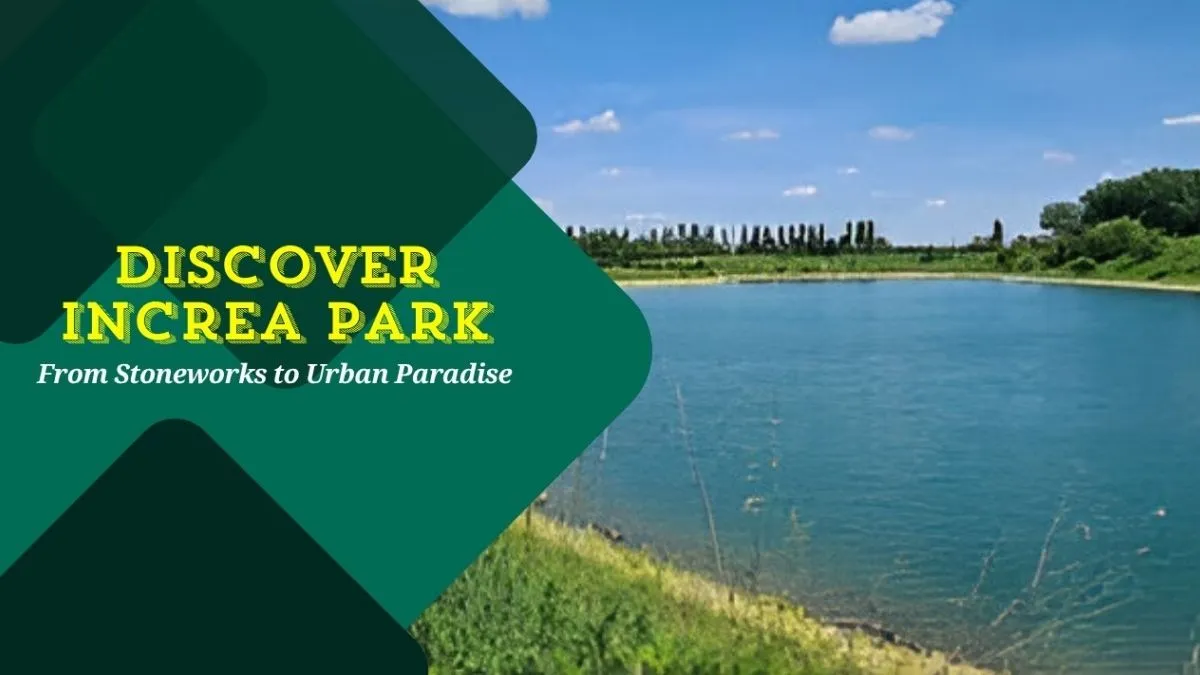Travel
Visit Increa Park – Lakeside Beauty & Trails Near Milan

Increa Park (Parco Increa) in Brugherio, near Milan, is not just a local green space—it’s a profound example of urban regeneration and environmental responsibility. Once an industrial quarry called Cava Increa, it has been transformed into a 33-hectare eco-park that blends natural beauty, sustainability, and community vitality. Whether you’re a nature lover, a family seeking weekend outings, or an eco-conscious traveler, Increa Park offers an enriching experience.
With its artificial lake, Italy’s longest recycled plastic bench, historical architecture, and thriving event scene, Increa Park showcases how a damaged landscape can be revived into a multifunctional paradise. This article takes you through everything you need to know—from its history and features to what makes it a model of sustainable urban planning.
Where Is Increa Park Located?
Located in the small city of Brugherio, in the province of Monza and Brianza, the guest house is about 15 km northeast of Milan and is therefore easily accessible to locals or tourists. Some of the public transit options are the Milan Metro (line 2) to Cologno Nord and then a short bus ride to the park. By car, one can get there using the Tangenziale Est (Eastern Ring Road), and there is parking near the entrance.
Located not far from Milan, it is popular among day trips, cycling tours, as well as for people who want to take a break from the city’s hustle and bustle.
History
After having been a place where an enormous quarry (extended limestone Cava Increa) was located since the 1980s, Increa Park’s land used to be a large limestone quarry. As there are numerous extraction sites, it has left its environmental scars – deep pits, dust, and degradation of the environment. Instead, in the early 90s, the Municipality of Brugherio decided to be courageous and restore this land from further degradation. to restore the area to a public park.
The Park’s Natural Features
- Artificial crystal lake, a recreation of an old excavation site.
- Lake is a sanctuary for ducks, herons, and freshwater turtles.
- Expansive lawns, wildwood areas, and restored limestone cliffs surround the lake.
- Landscape designed for sporting and ecosystem maintenance.
Cascina Increa: The Historic Farmhouse
On the other side of the park, there is Cascina Increa, a 16th-century Renaissance period farmhouse. Once used for agricultural purposes, it is now being used as a cultural as well as a community center.
Refurbished whilst retaining original architecture, Cascina Increa holds local exhibitions, workshops, and on occasion public events. Its rustic courtyards and porticos are in stark contrast with the windswept modern park environment, enabling them to establish a physical connection to Lombardy’s farming history when they visit.
Things to Do in Increa Park
- Walking & Biking Trails: Kilometers of paved and gravel paths wind through the park, ideal for jogging, cycling, and scenic walks.
- Picnic Areas: Designated spots with benches and tables allow for relaxed meals. Some areas are equipped with grills.
- Recreational Spaces: Open fields offer room for frisbee, football, yoga, or simply relaxing under a tree.
- Dog-Friendly Zones: The park welcomes dogs, with certain areas allowing off-leash play, making it a popular spot for pet owners.
Facilities and Accessibility
Increa Park is made to be inclusive and accessible. Paved pathways guarantee access by wheelchairs and strollers, and restrooms with water fountains are located all around the site.
Plenty of parking is offered at Via Moia and Via Increa. Although there is no fully designed café within the park, food trucks and mobile food vendors tend to come on occasion, and there are several restaurants nearby.
The park is open every day, with hours varying by the season (usually 8:00 am – sundown). Entry is free of charge.
Photography and Scenic Spots
Photographers are drawn to Increa Park for its reflections on the lake, dramatic limestone walls, and lush green contrasts. Popular photo spots include:
- The lake’s eastern shore during sunset
- The long recycled bench with urban-art murals
- The farmhouse courtyard for rustic textures
- Blooming wildflowers in late spring
For social media enthusiasts, it’s an Instagram-worthy location with abundant natural backdrops.
Tips for Visitors
- Bring essentials: Water, sunscreen, and a blanket or mat for lounging.
- No swimming: The lake is off-limits for swimming or boating.
- Respect wildlife: Do not feed animals; stick to paths to avoid disturbing habitats.
- Check events calendar: For seasonal markets, concerts, and public events via the Municipality of Brugherio’s website.
Increa Park for Families and Kids
Increa is also very family-oriented. Children get large lawns, trails for bicycling, and sometimes puppet shows or storytelling on the weekends. There are some low wooden mountains for climbing and natural play in specified areas.
The park is designed in an open way, so that parents can watch children but still be able to see the whole environment. It is a popular school-trip target that has an ecology and recycling-education slant.
Why Increa Park Matters
Besides recreation, Increa Park is a beacon of hope – a demonstration of restoring degraded landscapes into thriving ecosystems and a community center. It enlightens the visitors on the essence of sustainability and offers an example for other cities.
In a world suffering from the effects of climate change and urban sprawl, Increa Park is a testament to the fact that regeneration is not only possible but beautiful.
Conclusion
Increa Park does not only offer what it appears, but rather more than that. It is the place where nature, history, innovation, and community all live together. No matter whether you’re hiking its trails, attending one of their events, or simply relaxing at the lake, you’re part of an urban rebirth story and help create an entirely new vision of what urban parks can be.
Next time you are in the vicinity of Milan, do not go to the crowds and visit this hidden urban paradise in Brugherio. You’ll be leaving refreshed and hopefully slightly hopeful.
-

 BIOGRAPHY6 months ago
BIOGRAPHY6 months agoBehind the Scenes with Sandra Orlow: An Exclusive Interview
-

 HOME1 year ago
HOME1 year agoDiscovering Insights: A Deep Dive into the //vital-mag.net blog
-

 HOME1 year ago
HOME1 year agoSifangds in Action: Real-Life Applications and Success Stories
-

 BIOGRAPHY1 year ago
BIOGRAPHY1 year agoThe Woman Behind the Comedian: Meet Andrew Santino Wife




























